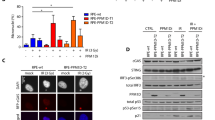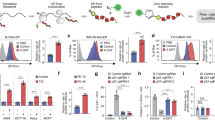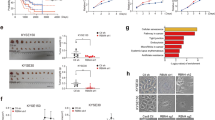Abstract
Cellular senescence is an irreversible cell cycle arrest triggered by the activation of oncogenes or mitogenic signaling as well as the enforced expression of tumor suppressors such as p53, p16INK4A and promyelocytic leukemia protein (PML) in normal cells. E2F‐binding protein 1 (E2FBP1), a transcription regulator for E2F, induces PML reduction and suppresses the formation of PML‐nuclear bodies, whereas the down‐regulation of E2FBP1 provokes the PML‐dependent premature senescence in human normal fibroblasts. Here we report that the depletion of E2FBP1 induces the accumulation of PML through the Ras‐dependent activation of MAP kinase signaling. The cellular levels of p16INK4A and p53 are elevated during premature senescence induced by depletion of E2FBP1, and the depletion of p16INK4A, but not p53 rescued senescent cells from growth arrest. Therefore, the premature senescence induced by E2FBP1 depletion is achieved through the p16INK4A‐Rb pathway. Similar to human normal fibroblasts, the growth inhibition induced by E2FBP1 depletion is also observed in human tumor cells with intact p16INK4A and Rb. These results suggest that E2FBP1 functions as a critical antagonist to the p16INK4A‐Rb tumor suppressor machinery by regulating PML stability.
Similar content being viewed by others
Article PDF
Author information
Authors and Affiliations
Corresponding author
Rights and permissions
About this article
Cite this article
Fukuyo, Y., Takahashi, A., Hara, E. et al. E2FBP1 antagonizes the p16INK4A‐Rb tumor suppressor machinery for growth suppression and cellular senescence by regulating promyelocytic leukemia protein stability. Int J Oral Sci 3, 200–208 (2011). https://doi.org/10.4248/IJOS11071
Received:
Accepted:
Published:
Issue date:
DOI: https://doi.org/10.4248/IJOS11071



